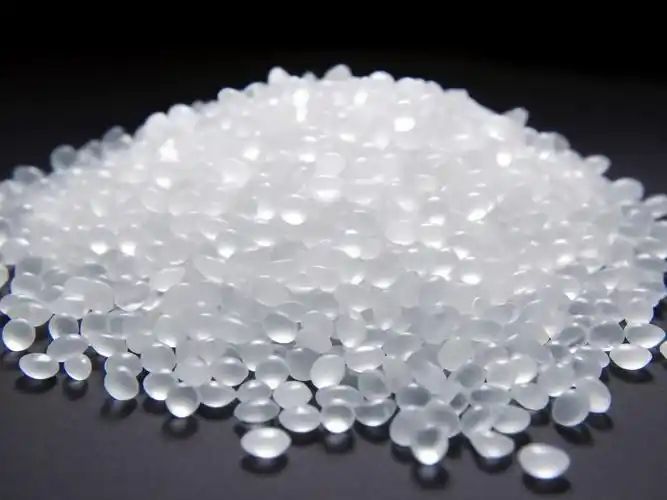Birefringent Materials Industry Analysis and Outlook
Saturday,18 Jan,2025

Birefringent materials, due to their unique birefringence properties, play an essential role in modern optics. These materials split incident light into two beams, each with a different refractive index, which in turn affects the path and speed of light propagation.
Basic Principles of Birefringent Materials
The phenomenon of birefringence stems from the anisotropy of materials, i.e., they have different optical properties in different directions. This phenomenon was first discovered by the Danish scientist Rasmus Bartholin in 1669 through the observation of Icelandic crystals (i.e. calcite). Birefringent materials mainly include natural crystals such as calcite and quartz and man-made materials such as liquid crystal polymers. Depending on the structure of the material, they can be categorized as uniaxial and biaxial birefringent materials. Uniaxial materials (e.g. calcite) have a significant difference in refractive index in only one direction, while biaxial materials (e.g. mica) have different refractive indices in all three directions.
Areas of application
Applications in optical communications: In fiber optic communications, birefringent materials are used to make polarization controllers and wavelength division multiplexers (WDM). These devices ensure the efficient transmission of signals through optical fibers by controlling the polarization of light. According to a study published by the IEEE Journal of Optical Communications, the birefringence effect in optical fibers can significantly improve the quality and efficiency of data transmission and reduce signal attenuation and noise.
Display technology: Liquid crystal displays (LCDs) rely on the birefringent properties of liquid crystals to control the transmission of light. By altering the arrangement of liquid crystal molecules through an electric field, the screen can display different images. 2021, a study by the Electronic Technology Research Institute (ETRI) in South Korea demonstrated breakthroughs in energy efficiency and improved viewing angles for LCD displays using a new birefringent material.
Medical imaging: In the medical field, the phenomenon of birefringence is used in microscopy technology, particularly polarized light microscopy. This technique can help observe and analyze microstructures in biological tissues, such as muscle fibers and connective tissue. According to a study by the National Center for Biotechnology Information (NCBI), birefringent imaging shows great potential in the early diagnosis of diseases such as cancer and arthritis.
Optical devices: Birefringent materials are also widely used in the manufacture of waveplates, polarizers and optical compensators. These devices are indispensable for spectral analysis, laser systems and optical detection. For instance, waveplates change the state of polarization by adjusting the phase of light and are often used in laser technology for pulse shaping.
Latest Market Research
Recent scientific research continues to drive the expansion of applications for birefringent materials.2023 A team of researchers at the Massachusetts Institute of Technology (MIT) has fabricated a new type of birefringent material through nanotechnology, in which the difference in refractive indices can be dynamically adjusted by an external electric field. This breakthrough heralds applications in variable optics, such as smart glasses and adaptive optics systems.
In addition, materials scientists are exploring the possibility of fusing birefringent materials with other functional materials. For example, birefringent materials combined with photovoltaic materials are expected to play a role in photovoltaic technology by increasing light absorption efficiency and thus improving the performance of solar cells. According to a paper published in Nature Materials in 2024, such composites have already demonstrated energy conversion efficiencies up to 30% higher than conventional silicon-based solar cells under laboratory conditions.
While birefringent materials show great potential in several areas, they also have their challenges. The cost of manufacturing the material, its stability and the consistency of its performance in different environments are still issues that need to be addressed. Material aging and environmental effects (such as temperature and humidity changes) can lead to changes in refractive index, affecting device performance.
Looking ahead, combining artificial intelligence and machine learning techniques to optimize and predict material performance will be an important development. With these advanced computational methods, more efficient, stable and cost-effective birefringent materials can be designed. In addition, the development of quantum optics may also open up new application scenarios for birefringent materials, especially in quantum communication and quantum computing.
Birefringent materials are not only an academic topic in optical research, but also a key element in driving the advancement of multiple technologies. Through continuous research and innovation, birefringent materials will continue to play a unique role in the future of optics, electronics and biomedicine. Continued investment from major research institutions and companies ensures the vitality and promise of this field. Whether it's enhancing the efficiency of optical communications or improving the precision of medical imaging, birefringent materials are opening up possibilities for creating a smarter, more efficient life for mankind.
According to an industry report, the global birefringent materials market is estimated to be valued at USD 337 million in 2024 and is expected to reach USD 425 million by 2031, growing at a CAGR of 3.4% during the forecast period of 2025-2031. (Source: Birefringent Materials Market Research Report)

